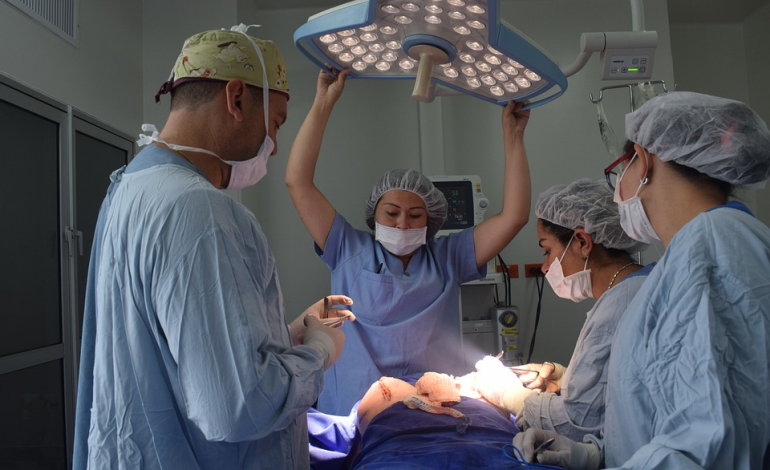What Is a Family Nurse Practitioner?

Primary care has become quite essential as people have started living longer. Nurse Practitioners (NPs) and Family Nurse Practitioners (FNPs) are in great demand. Family nurse practitioners are similar to primary care physicians and essential for the healthcare industry.
The AACN (American Association of Colleges of Nursing) has reported that the number of newly qualified NPs is rising yearly. Within the next few years, it is expected to surpass the number of primary care physicians with full training.
This gradual shift has inspired nurses to receive an FNP qualification to practice greater autonomy and better earning possibilities. The best part is that students can opt for an online master family NP program to study from the comfort of their homes and grab an array of career opportunities once they graduate. Keep reading to learn more.
What Is the Role of an FNP (Family Nurse Practitioner)?
FNPs are nurse practitioners that have specialization in family medicine. Their job role is similar to a primary care physician. They are licensed, trained, and independent nurses that work with different patients, varying health conditions, and disease prevention.
FNPs can cater to patients from all age groups, genders, background, and ethnicities, which makes them suitable for various medical settings and job roles in the healthcare field. They can also practice autonomy by setting up a private clinic.
FNPs can also be hired as teachers at an educational institute, as local/state department nurses, and can also be hired to work in ambulatory care facilities and community clinics.
There is no national standard for the care and services an FNP provides, and the autonomy level can also vary by U.S. state. Full autonomy is often granted when FNPs obtain a collaborative agreement with a physician or have practiced under a physician’s supervision.
FNP Vs. Other Advanced Nursing Roles
An NP in Ohio state is known as a CNP (Certified Nurse Practitioner), and is a form of APRN (Advanced Practice Registered Nurse). The United States has four main nationally recognized APRN nursing roles:
- CNP (Certified Nurse Practitioner), FNP is a specialty
- CNM (Certified Nurse-Midwife)
- CRNA (Certified Registered Nurse Anesthetist)
- CNS (Clinical Nurse Specialist)
All of these licenses can be obtained by nurses with a BSN (Bachelor of Science in Nursing) degree. Candidates must also have passed the national certification exam to be considered eligible for admission. Based on the type of program, registered nurses without a BSN degree can complete both degrees in a single program.
Family Nurse Practitioner Vs. Doctor of Medicine (MD)
An FNP is often compared to a primary care physician due to their similar job roles. However, the certification, training, and education are quite different. Below are the differences between an NP and MD:
- An MD is a doctorate, whereas an NP needs to have a master’s degree.
- A primary care physician requires 11 years of education and training, whereas NPs take six to eight years to do the same.
- MDs can prescribe medication in 50 U.S. states and independently prescribe medication, treatment, and medical device use. NPs, on the other hand, must be supervised by an MD.
A Family Nurse Practitioner is a bridge between an MD and RN. An FNP has a role that is quite similar to a physician, which makes it one of the top specializations for an NP without the need for residency requirements and having to attend medical school. FNPs can foster close patient relationships and aid in direct patient care, which is why they are more sought after as compared to a doctor.
Steps to Become an FNP
Different states determine the licensure requirements and scope of practice based on their laws. The following are general steps to becoming an FNP:
- Complete a nursing diploma, bachelor’s, or associate’s degree to obtain RN licensure. Students will need a bachelor’s degree to apply for an FNP program.
- Pass the NCLEX-RN exam to get RN licensure in your state.
- Look for a Master’s degree program with an FNP specialization, such as the MSN-FNP, once you have a bachelor’s degree and RN licensure to be eligible to apply.
- Most students opt for the MSN (Master of Science in Nursing) degree to become an FNP, and you can do the same. This will allow you to obtain an FNP education so you can sit for national exams for certification. Once certified, you can start practicing family healthcare.
- You will also be required to sit for the national board exam known as the ANCC Family Nurse Practitioner Board Certification exam. Successfully passing the exam will prove clinical expertise and entry-level clinical knowledge.
- The last step is getting an APRN license, the requirements of which will vary by state.
FNP Salary and Career Outlook
The United States U.S. Bureau of Labor Statistics predicts that FNP jobs will grow by 40% between 2021 and 2031. The average annual salary of an FNP is $120,249. This can vary based on location, experience, and patient care setting. Salary may be lower for nurses serving underserved communities and rural areas.
Endnote
FNPs can practice greater autonomy as compared to registered nurses. They can also handle greater responsibility and are fit to care for various kinds of patients. The best part is that they earn a hefty salary in exchange and get to make a difference in the healthcare sector.





